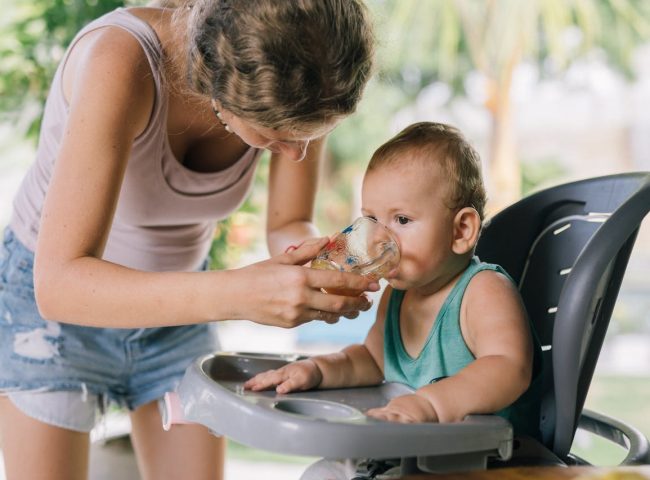Double the Love: A Guide to Twin Pregnancies
Twin pregnancies, characterized by the simultaneous development of two fetuses in the womb, bring double the joy and anticipation, but also unique challenges for expectant parents. These pregnancies require special care and attention from healthcare providers and parents alike.
In this article, we will explore the fascinating world of twin pregnancies, including the types, factors that increase the likelihood of twins, and the important aspects of prenatal care and delivery.

Source: www.medicalnewstoday.com
Types of Twin Pregnancies
Twin pregnancies can be categorized into two types: One being identical (monozygotic) and the other being fraternal (dizygotic) twins.
1. Identical Twins: Identical twins originate from a single fertilized egg that divides into two separate embryos. These twins share identical genetic material and usually share the same gender. However, they might display slight physical distinctions because of influences from their surroundings during their growth in the mother’s belly.
2. Fraternal Twins: Fraternal twins are the result of two distinct eggs getting fertilized by two separate sperm. These twins are as genetically similar as regular siblings born in different pregnancies and can be of either the same or different genders.
What are the Symptoms of a twin pregnancy?
- Stronger Morning Sickness: More intense nausea and vomiting.
- Faster Weight Gain: Belly grows quickly.
- Increased Fatigue: Feeling more tired.
- More Fetal Movements: Babies move a lot.
- Frequent Urination: Need to pee often.
- Back Pain: Aching back due to extra weight.
- Shortness of Breath: Harder to breathe as the belly grows.
- Anemia Risk: Higher chance of low red blood cell count.
- Gestational Diabetes Risk: Higher risk of diabetes during pregnancy.
- High Blood Pressure Risk: Increased chance of high blood pressure.
- Preterm Birth Risk: Twins are more likely to be born early.
Factors Influencing Twin Pregnancies
- Genetics: Sometimes, having twins can run in families. If there are twins on the mother’s side of the family, it can increase the likelihood of her having twins too. It’s like a special trait that can get passed down.
- Age: Women who are a bit older, usually over the age of 30, have a higher chance of having twins. This is because as women get older, their bodies might release more than one egg during a single cycle of ovulation. If both of these eggs get fertilized, it can lead to fraternal twins.
- Number of Pregnancies: Women who have had multiple pregnancies before are at a higher chance of having twins. It’s like her body becomes more used to the idea of carrying babies, so it’s more likely to release multiple eggs.
- Assisted Reproductive Technologies (ART): when couples have trouble getting pregnant, they might use fertility treatments like in vitro fertilization (IVF). These treatments can increase the chances of having twins because multiple embryos are often placed in the womb to increase the chances of a successful pregnancy. So, in cases of IVF, twins are more common. It’s like giving nature a little help in bringing babies into the world.
Prenatal Care for Twin Pregnancies
Twin pregnancies require vigilant prenatal care to ensure the health and well-being of both the mother and babies. Key aspects of prenatal care include:
- Frequent Check-Ups: Regular visits to the healthcare provider for monitoring and assessment of the babies’ growth and development.
- Nutrition: A balanced diet with extra calories and nutrients to support the needs of two growing fetuses.
- Weight Gain: Expectant mothers should gain an appropriate amount of weight as recommended by their healthcare provider.
- Rest and Hydration: Adequate rest and hydration are essential to manage the physical demands of carrying twins.
- High-Risk Monitoring: Twin pregnancies are considered high-risk, and close monitoring for complications such as gestational diabetes, preeclampsia, and preterm labor is crucial.
Check out the link to read more about twin pregnancy complications: https://www.hopkinsmedicine.org/health/conditions-and-diseases/staying-healthy-during-pregnancy/complications-of-multiple-pregnancy

Source:www.istockphoto.com
Delivery of Twins
- Position of the Babies: First off, the way the babies are positioned in the womb matters. Sometimes, both twins are in a good position for a regular birth, just like one baby. In such cases, virginal birth is a possibility. Other times, one might be in a good position, but the other isn’t.
- Gestational Age: Babies need time to grow and develop inside their mom’s tummy. Sometimes, if they’re born too early, it’s safer for them to be delivered through a cesarean section (a surgical procedure where doctors make a small cut in the mom’s belly to take the babies out) because their tiny bodies might not be fully ready for a regular birth.
- Mother’s Health: The health of the mom is super important. If there are any concerns about the mom’s health or if having a vaginal birth could be risky for her or the babies, the doctor might recommend a cesarean section.
So, when it comes to delivering twins, It might be a vaginal birth if everything lines up just right, a cesarean section if it’s safer for the babies and the mom, or sometimes a mix of both methods, depending on the situation. The most important thing is to make sure that the twins arrive safely and healthy into the world.
Expecting twins is like having a double dose of joy! With the right prenatal care and medical guidance, you’ll be ready for this unique adventure. So get ready to welcome your twins into the world and enjoy every moment of the beautiful chaos that’s about to begin. Double the love, double the fun!







